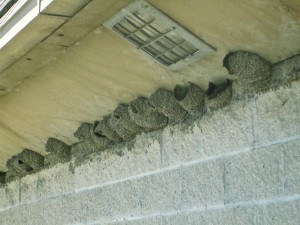I got on a BART train today at about two in the afternoon. An ad next to the door of the train proclaimed:
Judgment Day
May 12, 2011
THE BIBLE GUARANTEES IT!
At six o’clock, the predicted time when Judgment Day was going to come (725,000 days after Jesus was executed, or something like that), I was sitting eating dinner with some friends. “We’re still here,” someone said.
I just went to check the Web site of Family Radio — that’s the Web site controlled by Harold Camping, the guy who’s been predicting the end of the world. Their Web site is still up and running, and it still says:
Judgment Day
May 21, 2011
THE BIBLE GUARANTEES IT!
00 days left
And their radio station is still broadcasting (they stream it live on the Web site if you want to check it out) — and the announcer just said that he’ll back back again tomorrow.
I guess that means the Rapture is off. So what happened? Was it supposed to be 7,250,000 days, not 725,000 days? Does God count in hexadecimal? Or maybe God prefers prime numbers (this is a prime number year after all) so it’s going to be the next largest prime, 725,009?
I’m sure they’ll come up with some reason or another why the Rapture didn’t come today. And I would love to hear your speculations on where they did their math wrong.


